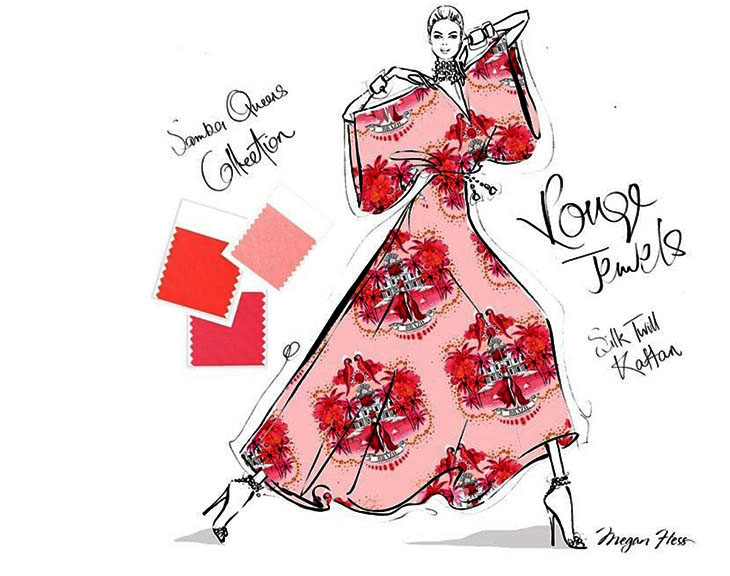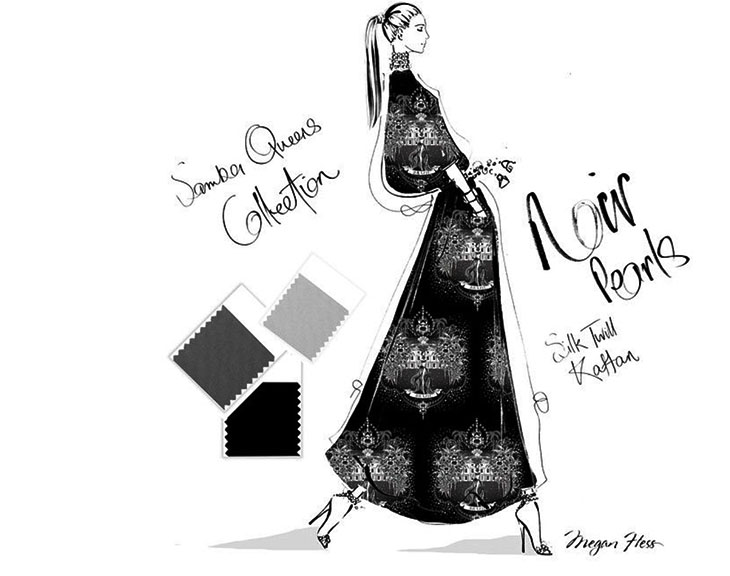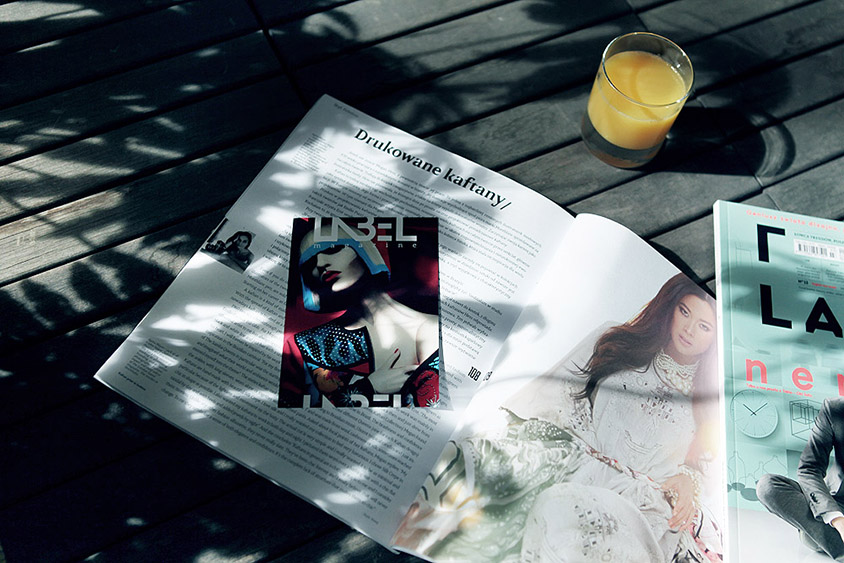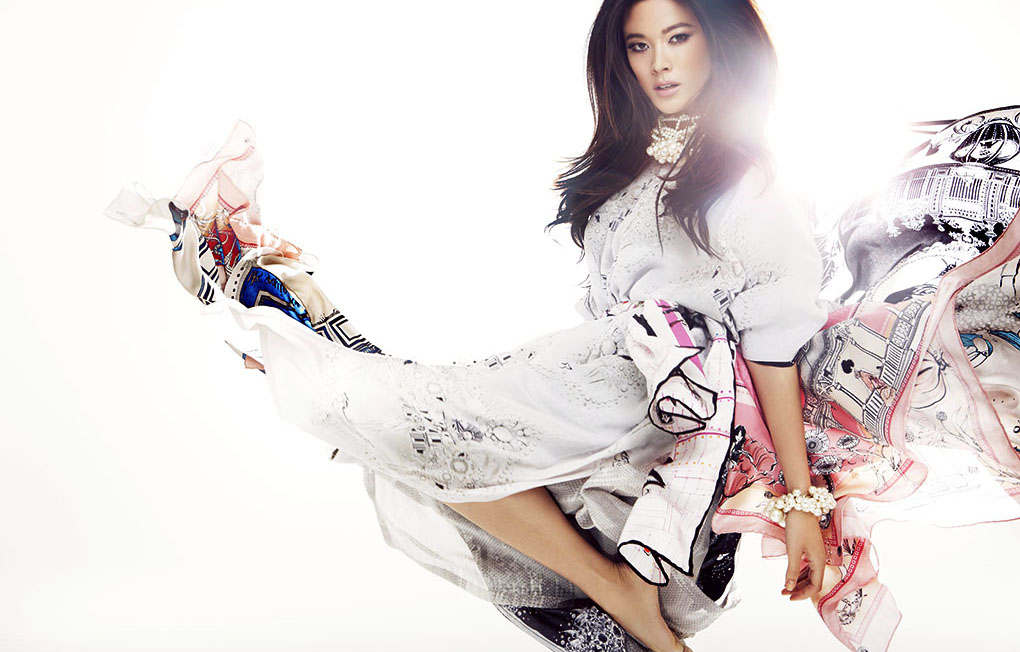PRINTED KAFTANS
writer: Agata Mayer | images: Megan Hess

Even if you do not know Megan Hess, you must be familiar with her works. She is one of the most highly valued fashion illustrators of the twenty first century, cooperating with the greatest icons of the business. Megan’s illustrations, created with Montblanc pen, are sold worldwide. They are reproduced in books and magazines as well as on the walls of interior designers. Starting on her career as fashion illustrator, Hess did not plan that one day she will simply begin to design timeless kaftans.
A kaftan is a kind of male toga of Eastern origin, worn in many cultures around the world, mainly as a symbol of wealth.
With the spread of kaftan and its evolution both the form and use changed naturally. Worn in Europe since early Middle Ages,
nowadays kaftan is treated as a tunic for women, becoming a source of inspiration for many designers, including Megan.
1960-ties was a breakthrough period in kaftan designing. Various types of kaftans started to appear in collections of such designers as
Emilio Pucci or Bill Gibb. For Megan Hess the greatest authority in art has always been the French artist born in Russia, Erté. “The most
influential artist to me has always been Erté. He was a Russian born French artist who was prolific in the 1800’s. His work was mainly in
black and white line and just has such a unique and distinctive style. I loved that he ignored trends, even back then and just drew from
his heart. I will forever be inspired by his work”.
While working on her first collection (the Samba Queens Kaftan Collection) Megan found inspiration in the Brazilian carnival. „For my first Collection I was very inspired by Carnival time in Brazil. The brashness and confidence of The Samba Queens in particular was the starting point for my inspiration. I created four different Queens (one for each Kaftan design) and imagined what their world and ambiance would be. I sat in the studio listening to Brazilian music, I burnt tropical candles and just immersed
myself into the theme”.
The sixties kaftan took form of the letter T and was made from wool, cashmere or silk, sometimes reached the ankles, with long sleeves, worn alone or together with widened pants. Asked about focal points of her kaftans, Megan replies: ”My
Kaftans are hand-made with beautiful Silk Crepe. I love silk and I really wanted my collection to feel very luxurious. I chose Silk Crepe in
particular because of the lightless and movement on the body. The actual cut is very simple and I really wanted it to be as minimal and
chic in shape as possible. I also wanted my kaftans to work in both day and night. I pictured them worn over a bathing suit with a chic flat sandal by day and with heels and added jewels by night”. And she concludes: ”Kaftans in general are a clothing staple to me and I consider them timeless. Unlike any other fashion silhouette, they never really date. They’ve been chic forever and I really believe that will never change. To me they symbolise a sense of both elegance and confidence. It’s the complete lack of structure that makes them so chic”.



This article appeared in the 13th issue of Label magazine.





